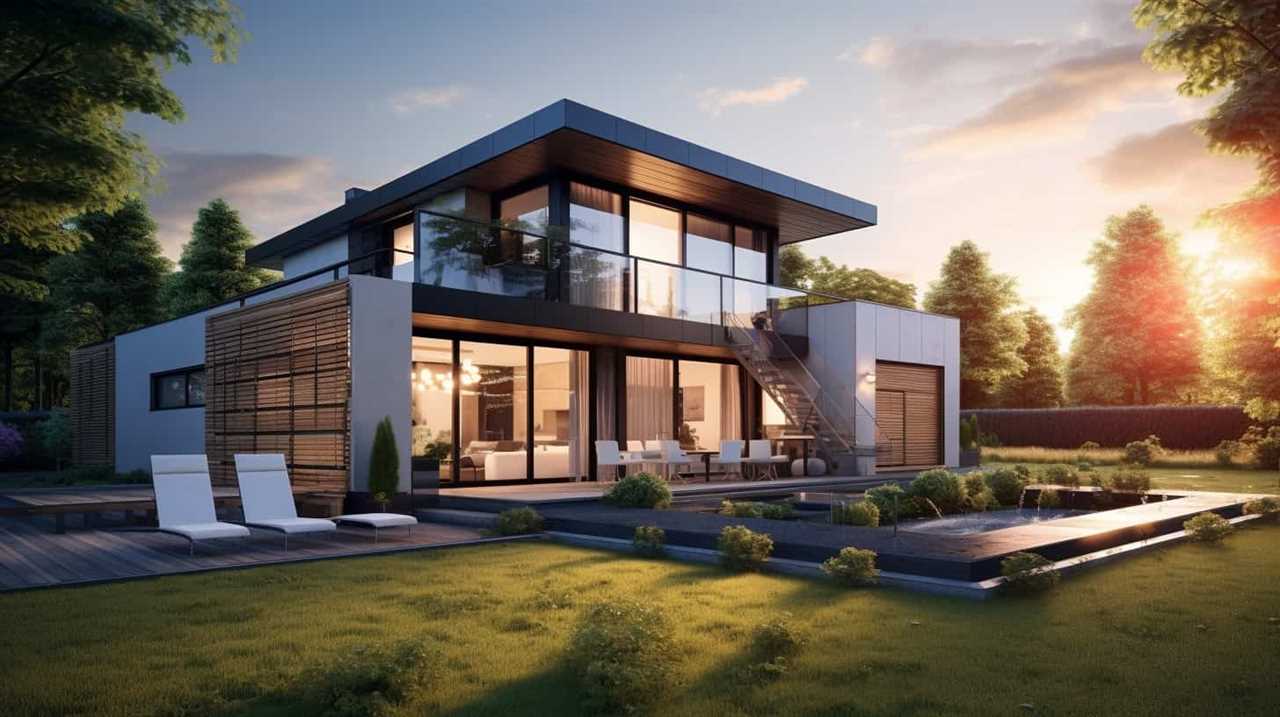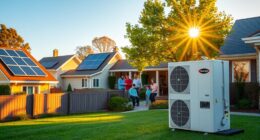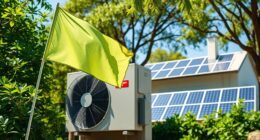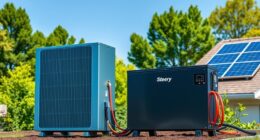Welcome to our comprehensive tutorial on setting up energy-saving heat pumps! Our aim is to assist you in enhancing the comfort of your home while also making it eco-friendly.
In this article, we’ll walk you through the process of:
- Selecting the right heat pump
- Preparing your home for installation
- The actual installation itself
We’ll also provide tips on how to maintain and maximize energy efficiency with your new heat pump.
Let’s get started on this exciting journey towards a more efficient and sustainable home!

Key Takeaways
- Professional help is recommended for proper installation and load calculation.
- Sizing and capacity considerations ensure effective heating and cooling without wasting energy.
- Consider the upfront cost with long-term energy savings.
- Look for heat pumps with minimal maintenance requirements.
Understanding Energy Efficiency in Heat Pumps
Let’s explore how heat pumps can help us save energy and reduce our carbon footprint.
Energy efficient heat pumps offer numerous benefits and are a great way to improve energy efficiency in our homes. By using advanced technology, these heat pumps can extract heat from the air or ground and transfer it indoors to warm our homes during winter. In the summer, they can also remove heat from our homes and release it outside, providing cooling. This process consumes much less energy compared to traditional heating and cooling systems, resulting in significant energy savings.
Additionally, energy efficient heat pumps help reduce our carbon footprint by using renewable energy sources and emitting fewer greenhouse gases.
Now that we understand the benefits of energy efficient heat pumps, let’s move on to assessing our home’s heating and cooling needs.

Assessing Your Home’s Heating and Cooling Needs
When assessing our home’s heating and cooling needs, it’s crucial to ensure that our HVAC system is properly sized. An undersized system may struggle to meet the demands of our home, leading to inefficient heating and cooling.
On the other hand, an oversized system may cycle on and off frequently, wasting energy and reducing comfort.
Additionally, adjusting our temperature settings to energy-saving levels can further optimize the efficiency of our heat pump, helping us save on our energy bills without sacrificing comfort.
Properly Sized HVAC System
We need to accurately assess our home’s heating and cooling needs to ensure the HVAC system is properly sized. Proper installation and load calculation are crucial steps in this process.
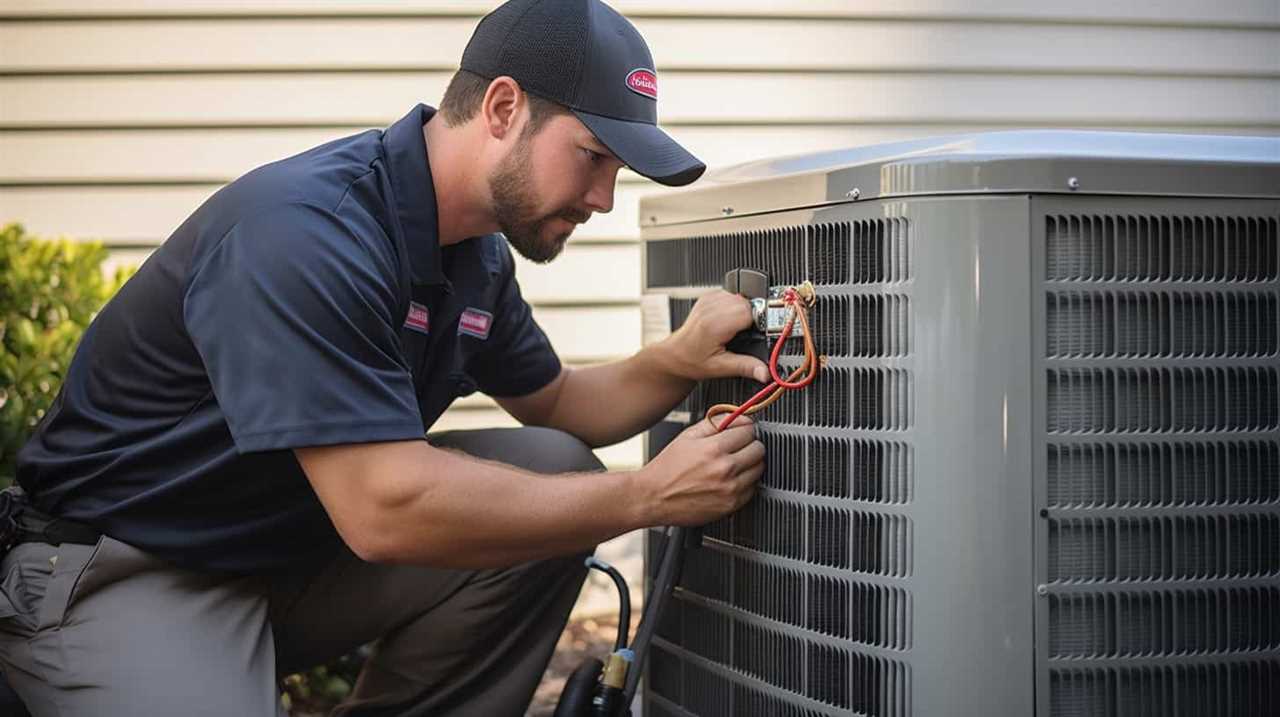
When it comes to proper installation, it’s essential to seek professional help to ensure that the system is installed correctly and efficiently. A professional technician will consider factors such as the size of your home, insulation levels, and the climate in your area to determine the appropriate size for your HVAC system. This involves conducting a load calculation, which takes into account the heat gain and heat loss of your home.
By accurately assessing your home’s heating and cooling needs, you can avoid issues such as an undersized system struggling to keep up with demand or an oversized system that wastes energy.
Now that we understand the importance of properly sizing the HVAC system, let’s move on to discussing energy-saving temperature settings.
Energy-Saving Temperature Settings
To optimize energy efficiency, we should regularly adjust the temperature settings of our HVAC system and ensure they align with our home’s heating and cooling needs. By implementing energy-saving thermostat settings, we can effectively optimize the performance of our heat pump. Here are three key considerations for setting our thermostat:

-
Set the temperature lower during the winter: Lowering the temperature by a few degrees can significantly reduce energy consumption and save money on heating bills. A recommended starting point is around 68°F during the day and 60°F at night.
-
Adjust the temperature when away from home: Using a programmable thermostat, we can set the temperature to be lower when we’re away from home and higher when we return. This ensures comfort while minimizing energy waste.
-
Utilize the heat pump’s efficiency: Heat pumps are most efficient when the temperature difference between the indoor and outdoor environment is minimal. Setting the thermostat to a moderate temperature allows the heat pump to operate optimally, reducing energy usage.
Selecting the Right Energy-Efficient Heat Pump
Let’s start by comparing energy ratings when selecting an energy-efficient heat pump. It’s important to consider the seasonal energy efficiency ratio (SEER) and heating seasonal performance factor (HSPF) to ensure optimal performance and cost savings.
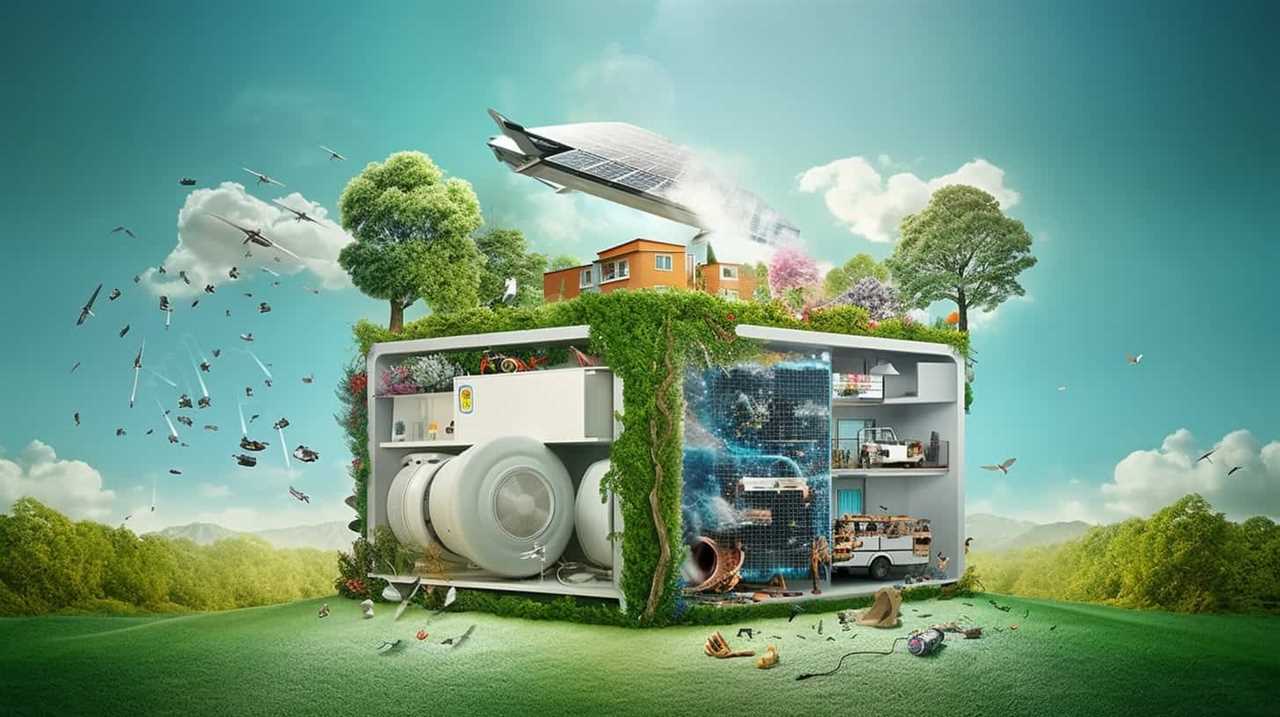
Additionally, sizing and capacity considerations are crucial to ensure the heat pump is able to effectively heat and cool your home without wasting energy.
These factors will help us choose the right energy-efficient heat pump for your specific needs and maximize energy savings.
Comparison of Energy Ratings
When comparing energy ratings, it’s important to consider the efficiency and performance of different heat pump models. To help you make an informed decision, here are some key factors to consider:
-
Energy saving features: Look for heat pumps that have features like variable speed compressors, which allow for more precise temperature control and reduce energy consumption. Additionally, models with high Seasonal Energy Efficiency Ratio (SEER) and Heating Seasonal Performance Factor (HSPF) ratings indicate better energy efficiency.
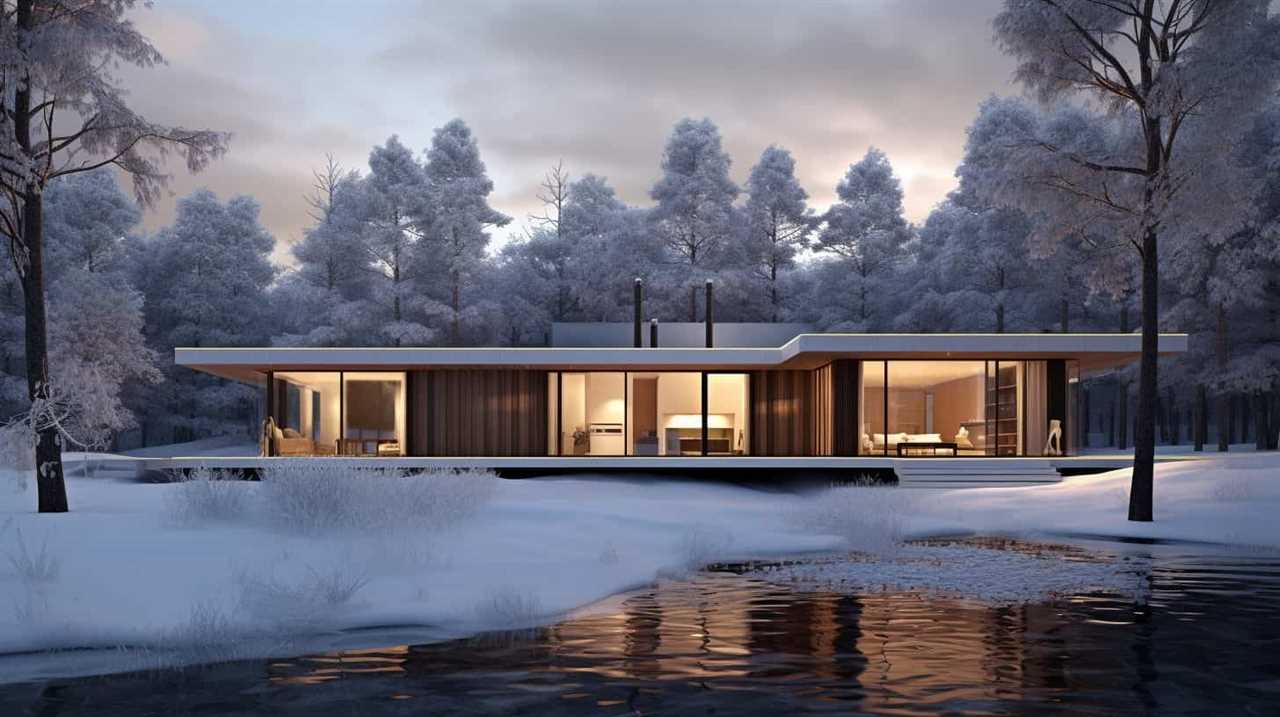
-
Cost effectiveness comparison: While it’s important to consider the upfront cost of a heat pump, it’s equally important to factor in long-term energy savings. Pay attention to the estimated annual energy consumption and operating costs provided by manufacturers. This will help you determine the most cost-effective option over the lifespan of the heat pump.
-
Warranty and maintenance: Consider the length and coverage of the warranty offered by the manufacturer. Additionally, look for heat pumps that require minimal maintenance and have easily accessible components for servicing.
By taking these energy ratings and cost effectiveness factors into account, you can choose a heat pump that will provide optimal energy efficiency and performance for your needs.
In the next section, we’ll discuss sizing and capacity considerations for heat pumps.
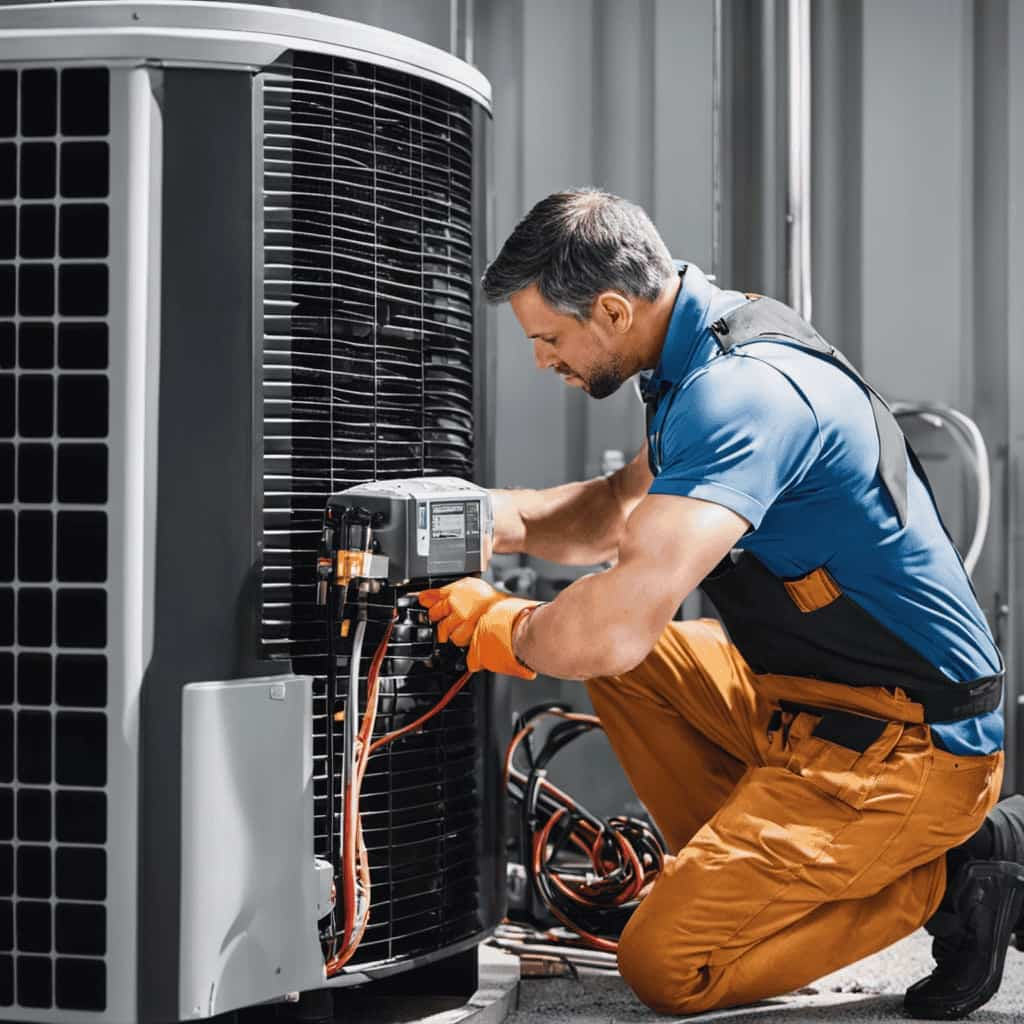
Sizing and Capacity Considerations
We need to consider the size and capacity of the heat pump when selecting the right energy-efficient option. The size of the heat pump is determined by the heating and cooling load requirements of the space it will be installed in. Factors such as the square footage, insulation, and number of occupants in the space will affect the heat pump capacity needed. It is important to properly size the heat pump to ensure optimal performance and efficiency. Oversized heat pumps can lead to short cycling and increased energy consumption, while undersized heat pumps may struggle to reach desired temperatures. To determine the correct size and capacity, it is recommended to consult with a professional HVAC technician who can perform load calculations and consider other factors like climate and building orientation.
| Factors Affecting Heat Pump Capacity | Key Considerations |
|---|---|
| Square Footage | Determine the size of the space to be heated or cooled. |
| Insulation | Evaluate the level of insulation in the building to assess heat loss or gain. |
| Number of Occupants | Consider the number of people in the space, as their body heat contributes to the load. |
| Climate | Take into account the local climate to determine the heating and cooling needs. |
| Building Orientation | Consider the direction the building faces, as it can affect solar gain or loss. |
Preparing Your Home for Heat Pump Installation
First, we need to assess our home’s electrical system to ensure it can support the energy requirements of the heat pump installation. This is an essential step in our pre-installation checklist to guarantee a smooth and efficient process. Here are some key points to consider:
-
Check the electrical panel capacity: Ensure that the electrical panel has enough capacity to handle the additional load of the heat pump. If necessary, consult an electrician to make any necessary upgrades.
-
Evaluate the wiring: Verify that the existing wiring is compatible with the heat pump’s electrical needs. In some cases, it may be necessary to upgrade the wiring to accommodate the higher voltage requirements.
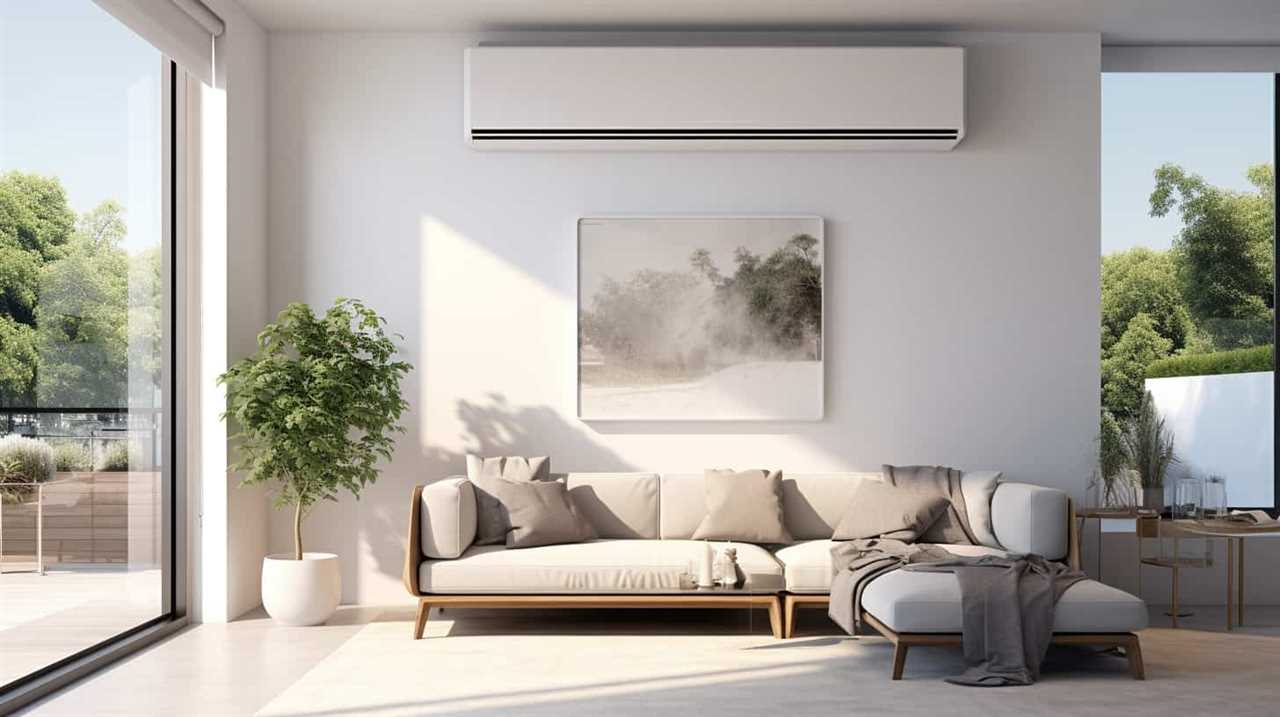
-
Optimize indoor airflow: Before the heat pump installation, clean or replace air filters and ensure that vents and registers are unobstructed. This will help maximize the efficiency of the heat pump system.
By taking these necessary steps, we can ensure that our home is ready for the installation of an energy-efficient heat pump.
Now, let’s move on to the step-by-step guide to installing the heat pump system.
Step-by-Step Guide to Installing an Energy-Efficient Heat Pump
Now, let’s dive into the step-by-step process of installing our energy-efficient heat pump.
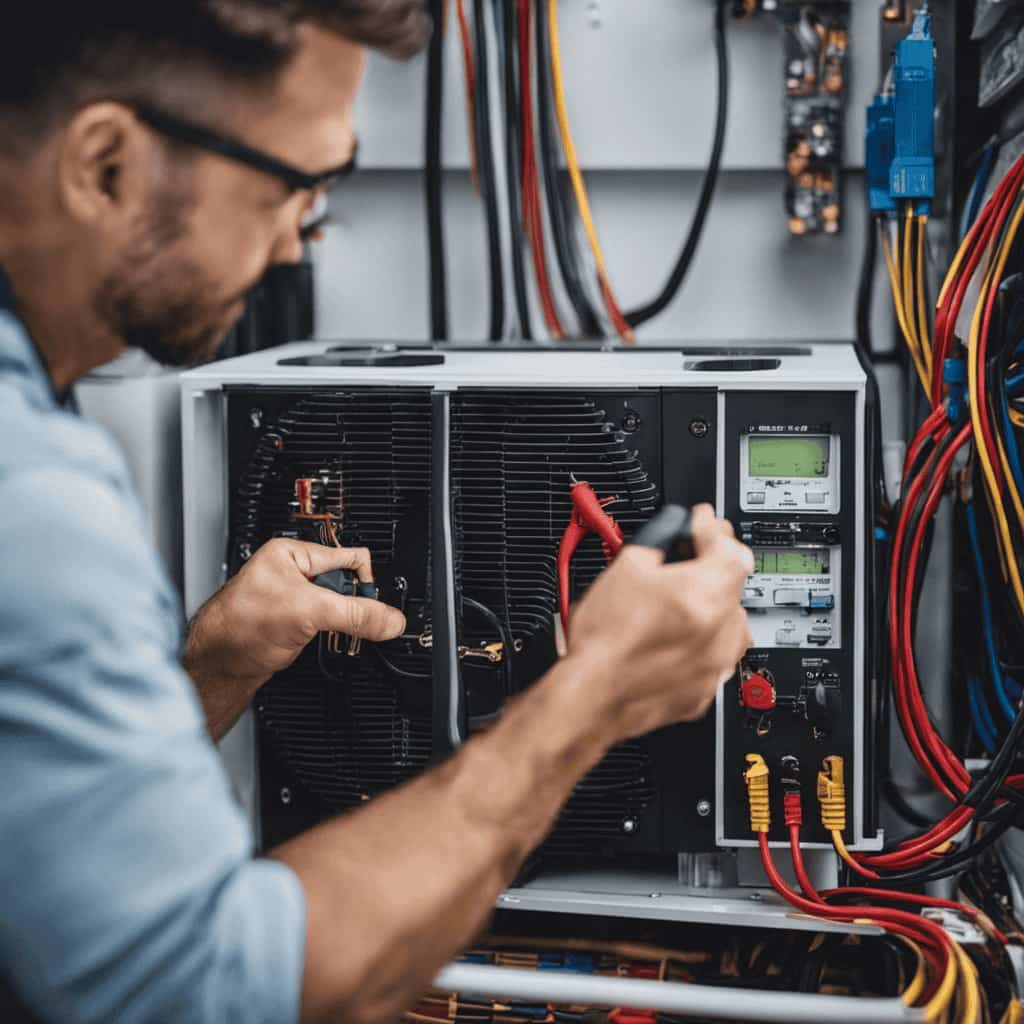
The installation process begins with selecting the appropriate location for the heat pump. It should be placed outside, away from windows and doors, to minimize noise and ensure proper airflow.
Next, the existing HVAC system needs to be disconnected and removed. This involves shutting off the power, disconnecting the electrical wires, and removing the old unit.
Once the old unit is removed, the new heat pump can be installed. This involves connecting the electrical wires, refrigerant lines, and drain pipes.
Finally, the system needs to be tested to ensure it’s operating correctly. This includes checking the airflow, refrigerant levels, and thermostat settings.
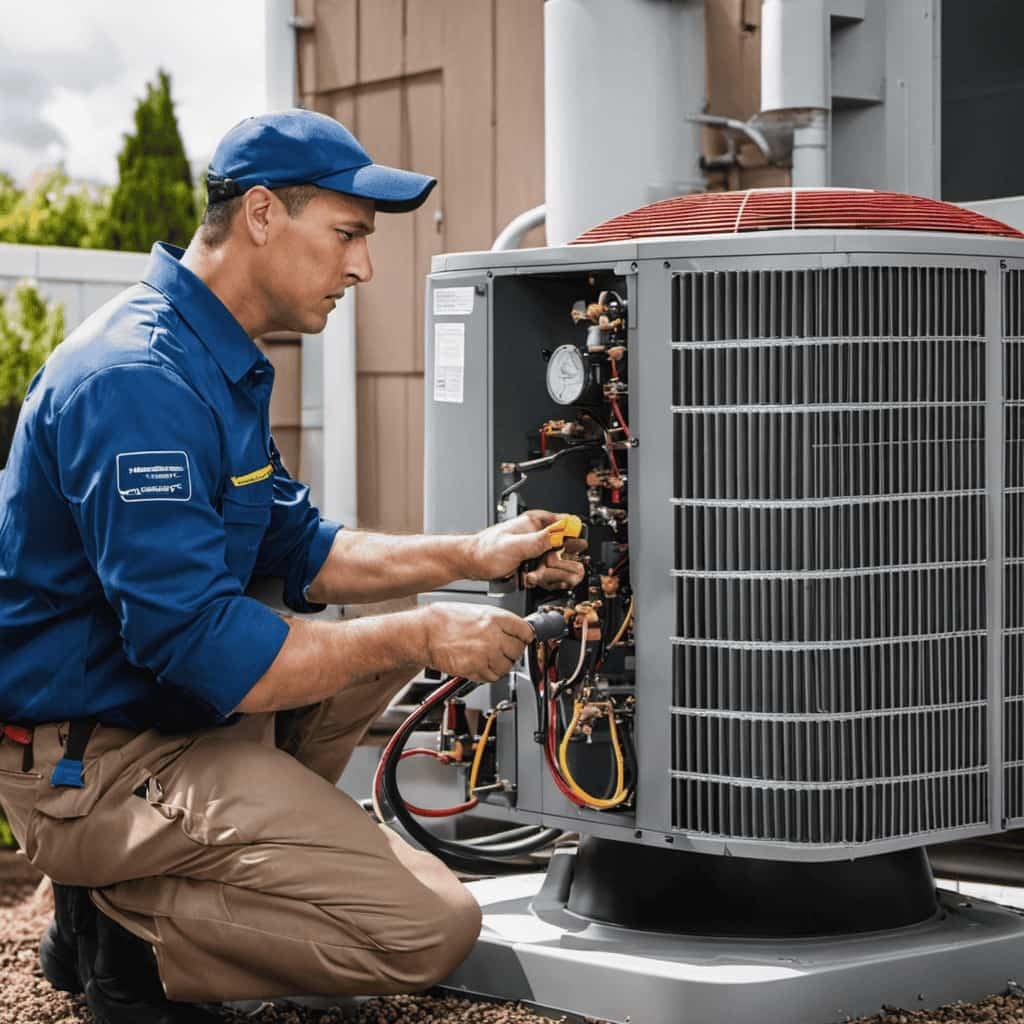
Tips for Maintaining and Maximizing Energy Efficiency With Your Heat Pump
To maintain and maximize energy efficiency with your heat pump, it’s important to regularly clean and replace air filters. Air filters play a crucial role in maintaining the performance of your heat pump by preventing dust and debris from clogging the system.
Here are some maintenance tips to improve the performance and energy efficiency of your heat pump:
-
Schedule regular professional maintenance: A qualified technician can inspect and tune up your heat pump, ensuring it operates at its peak efficiency.
-
Keep the outdoor unit clean: Remove any debris, leaves, or vegetation around the outdoor unit to allow proper airflow and prevent obstruction.
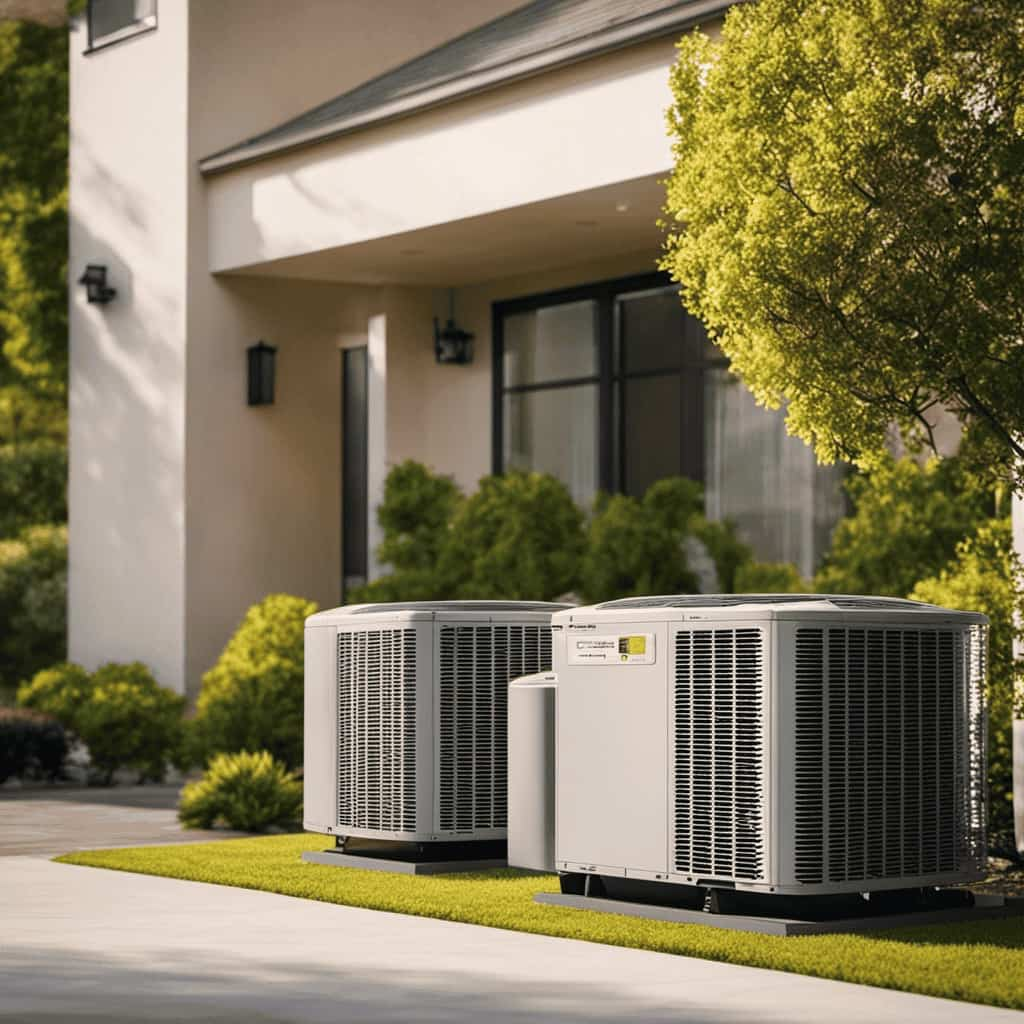
-
Check and adjust thermostat settings: Optimize your thermostat settings to ensure your heat pump runs efficiently while keeping your home comfortable.
Frequently Asked Questions
Are Heat Pumps Suitable for All Types of Homes?
Heat pumps are suitable for most homes, but factors like cost and environmental impact should be considered. They provide efficient heating and cooling, reducing energy consumption and carbon emissions. Professional guidance is recommended for proper installation.
How Long Does the Installation Process Typically Take?
Installing energy-efficient heat pumps typically takes a few days, depending on the complexity of the project. We’ve encountered challenges like outdated electrical systems, but our experienced team ensures a smooth installation process.
Can I Install a Heat Pump Myself, or Do I Need Professional Help?
Installing a heat pump yourself, known as DIY heat pump installation, can be challenging and may lead to costly mistakes. Professional help offers benefits such as expertise, proper installation, and warranty coverage, ensuring optimal performance and efficiency.
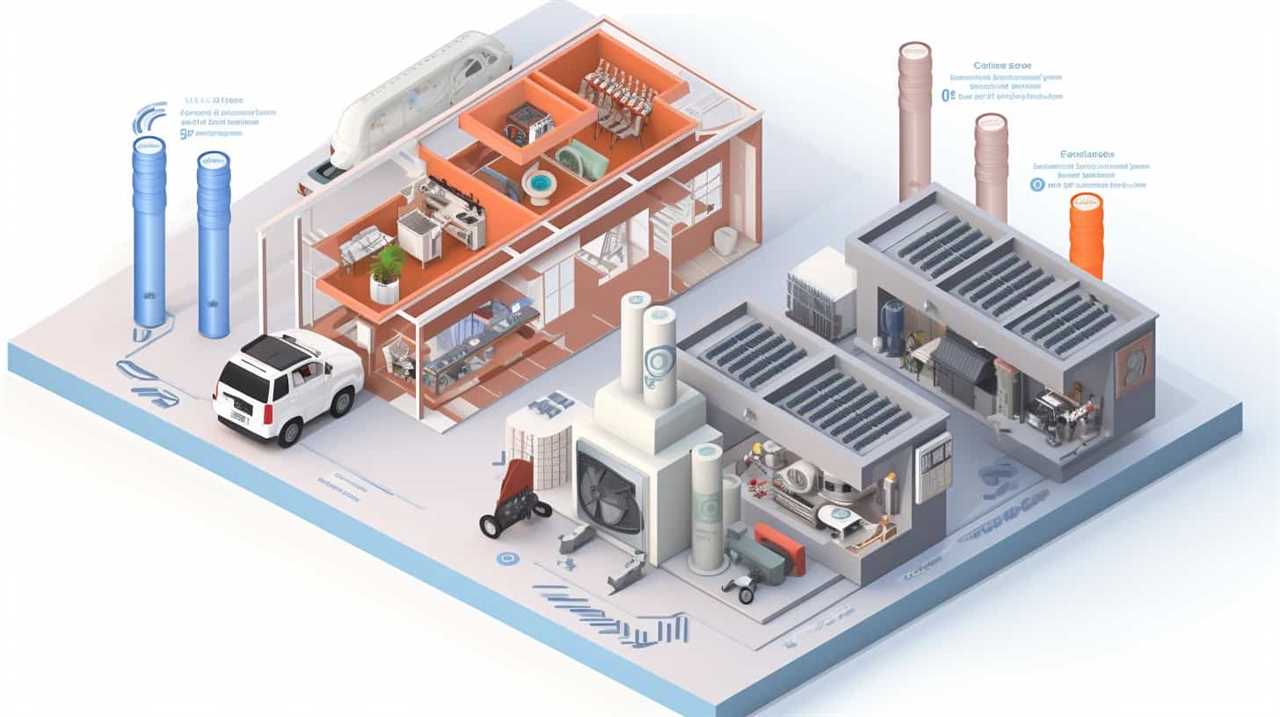
Are There Any Government Incentives or Rebates Available for Installing Energy-Efficient Heat Pumps?
Yes, there are government incentives and rebates available for installing energy-efficient heat pumps. These financial incentives can help offset the cost of installation and make it more affordable for homeowners.
How Often Should I Schedule Maintenance for My Heat Pump to Ensure Optimal Energy Efficiency?
To ensure optimal energy efficiency, we recommend following a heat pump maintenance checklist. Regularly scheduling maintenance appointments and addressing signs of heat pump inefficiency can help keep your system running smoothly and save on energy costs.
Conclusion
In conclusion, by understanding energy efficiency, assessing your home’s needs, selecting the right heat pump, and properly preparing and installing it, you can enjoy the benefits of an energy-efficient heating system.
Remember to regularly maintain and maximize efficiency with proper care and usage.
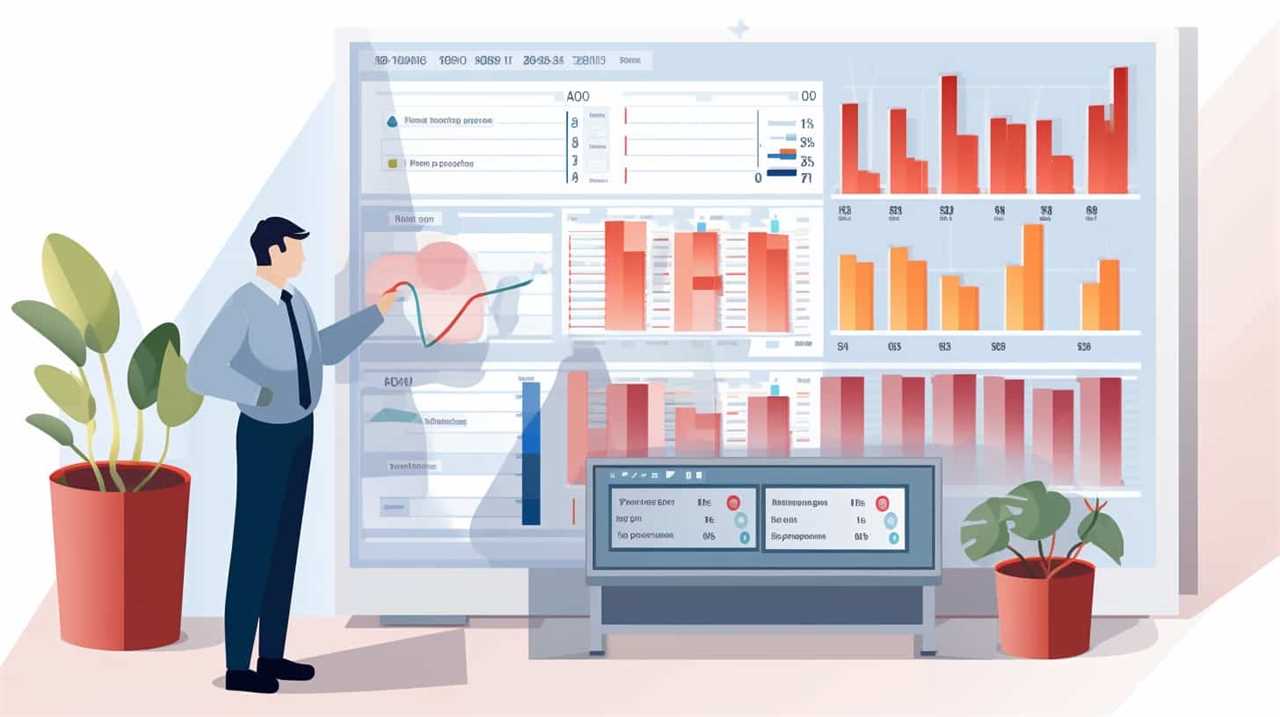
With these steps and tips, you’ll be on your way to a more comfortable and eco-friendly home.




